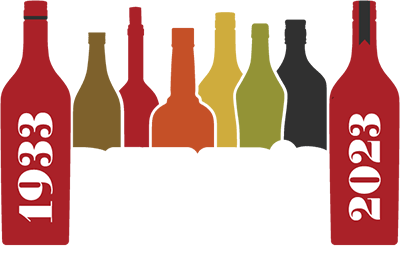Some Background on the Agave and Its Transformation into a Popular Liquor
Tequila is the second most-popular spirit in the world, coming in right behind vodka, and its popularity only continues to grow with premium and celebrity brands entering the market regularly.
All tequilas are mezcals (mezcal is the general term for agave distillate), but not all mezcals are tequilas, just like not all whiskeys are bourbons. The town of Tequila in the Mexican state of Jalisco began producing a significant amount of the spirit, which came to be known as mezcal de Tequila, leading to the general term tequila. It has a lengthy history, with the first known documented reference coming from 1619, and could have been produced prehistorically, or distillation methods could have been introduced as part of the Manila Galleon shipping route. Since wild and domesticated agave plants are similar, it is difficult to determine exactly when agave began to be grown as a domesticated crop and mezcal production began.
Agave itself is not a cactus or an aloe, although it resembles both. It is an unrelated succulent that has been used for weaving fiber (much like hemp), and has sap that has caustic elements and was used for cleaning wounds.
Agave plants take 6-8 years to cultivate before they are harvested. When the plant is cut, a liquid called aguamiel pools. This can be fermented into pulque, a forerunner of mezcal that is not distilled. For mezcals, including tequilas, the cone (piña) in the middle of the agave is harvested and roasted, the liquid is pressed and fermented with yeast for 3-12 days, distilled, and aged from 14-21 days.
After World War II, the popularity of tequila increased markedly when spirits from Europe became scarce. It increased so much that other countries began producing similar spirits and marketing them as tequila. The Mexican government wanted to keep tequila proprietary, so looked to a Denomination of Origin (DO) – like Champagne or Scotch – to protect the integrity of the product and the economy built around it. This was one of the first, if not the first DO outside of Europe. The DO for tequila states that it may be produced in only five areas – the state of Jalisco and the municipalities of Tamaulipas, Michoacan, Guanajuato, Nayarit.
The DO also dictates that tequila can only be made from the Weber blue agave, not the four different species from which it used to be made. It does not dictate the process of making tequila, so factors such as stills, cooking, and growing practices are not necessarily consistent.
Unfortunately, the DO has had a troubling effect on cultivation – Weber blue agave plants are cloned from clippings, so there is little to no natural genetic resistance, therefore a crop can be decimated if infected with any kind of blight. There have been historic plagues that wiped out Weber blue agave, leaving producers unable to make the product at all.
Non-tequila mezcal is gaining popularity largely because the production process is traditional and not always industrial; there are a number of cottage-industry producers in Mexico whose mezcal is much sought-after. Historically, mezcal could be made from up to 42 types of agave, so the flavors were very diverse and nuanced. In 1994, a new DO for mezcal was introduced, with seven states allowed to produce it, using just five species of agave. The double-edged swords is that 24 Mexican states have mezcal-producing history, so this could hurt them, as many of the small producers don’t have the capital or literacy skills to produce according to the DO.
In addition to mezcal, there are five types of tequila:
Tequila Blanco: also known as silver or plata tequila, this is an unaged spirit
Tequila Joven: a mix of aged and unaged tequila
Tequila Reposado: Tequila that is aged in barrels from 2-12 months
Tequila Añejo: Tequila aged at least 12 months in American or European barrels
Tequila Extra Añejo: must be aged at least three years
Aging tequila makes the spirit more complex and smoother, so older tequilas are ideal for sipping, while blanco and joven tequilas are most commonly used in margaritas and other mixed drinks.
Tequila Trivia:
• One of the earliest known ads for mezcal in the United States was found in 1857 in Los Angeles newspaper advertising Mezcal de Tequila.
• The leading theory regarding the origin of the Margarita is that it was developed in a Tijuana restaurant in 1930s to make the tequila shot more genteel and appealing to female clientele.
• The infamous worm is actually the larva of the agave redworm moth that grows on agave and was included in bottles as a marketing gimmick. Traditionally, the larva is ground with salt and consumed on the side; the larva will change the taste of tequila if it is in the bottle.
• For the real deal, make sure the label on your bottle states that it is made from 100% agave.
Be sure to keep an eye on Bremer’s tasting schedule for opportunities to try tequilas and mezcals, and if you have a favorite that we don’t carry, just ask and we will find out of we can order it for you.
Sources:
Bonappetit.com, “What is Mezcal?”











